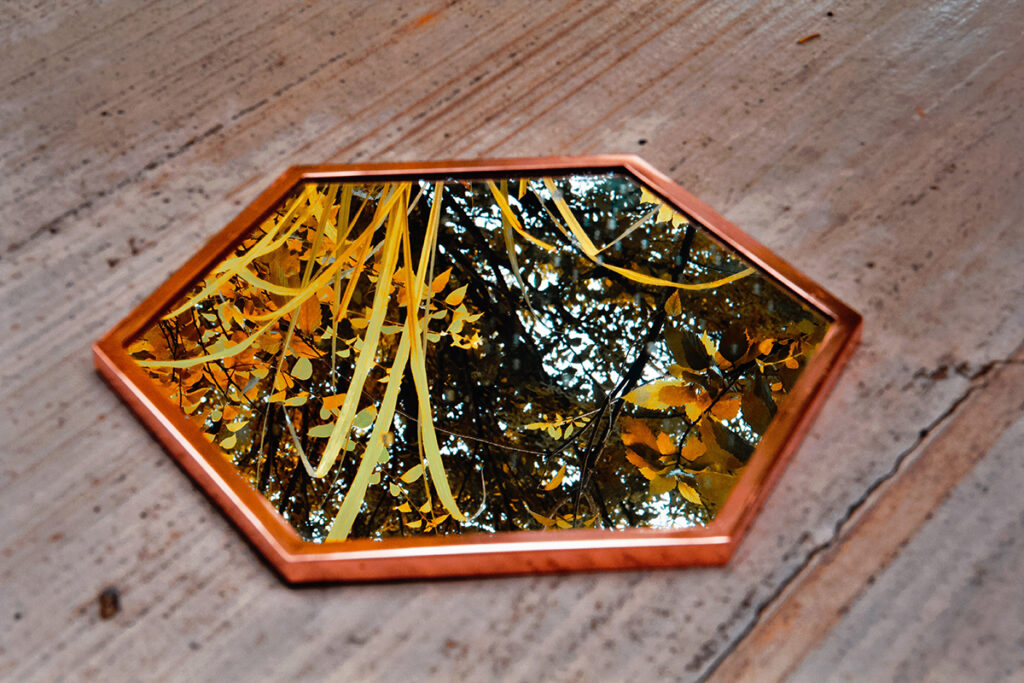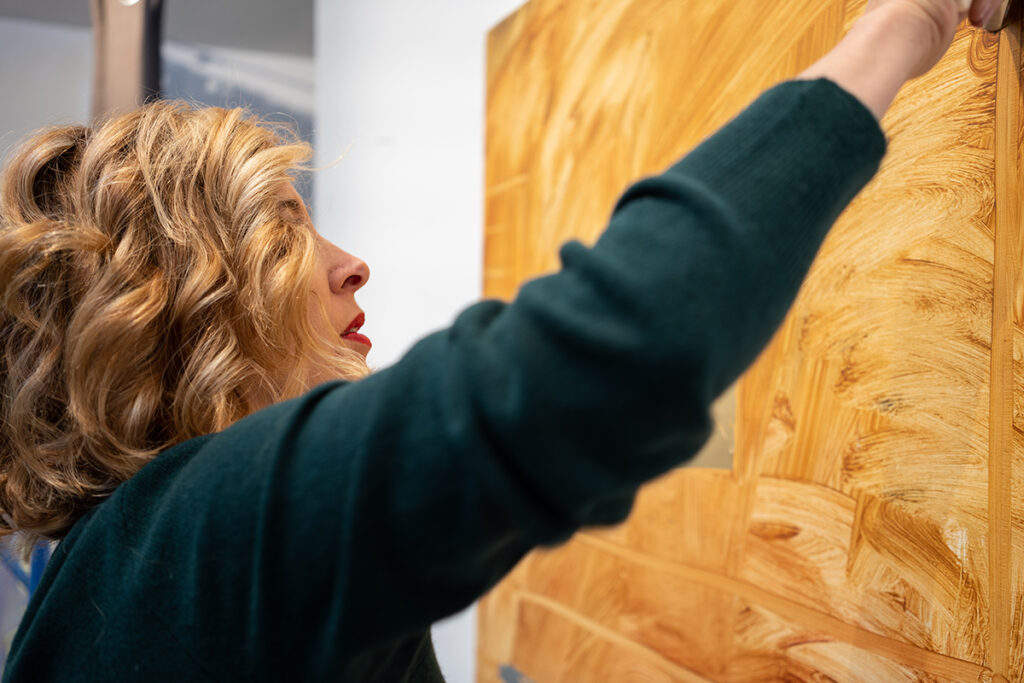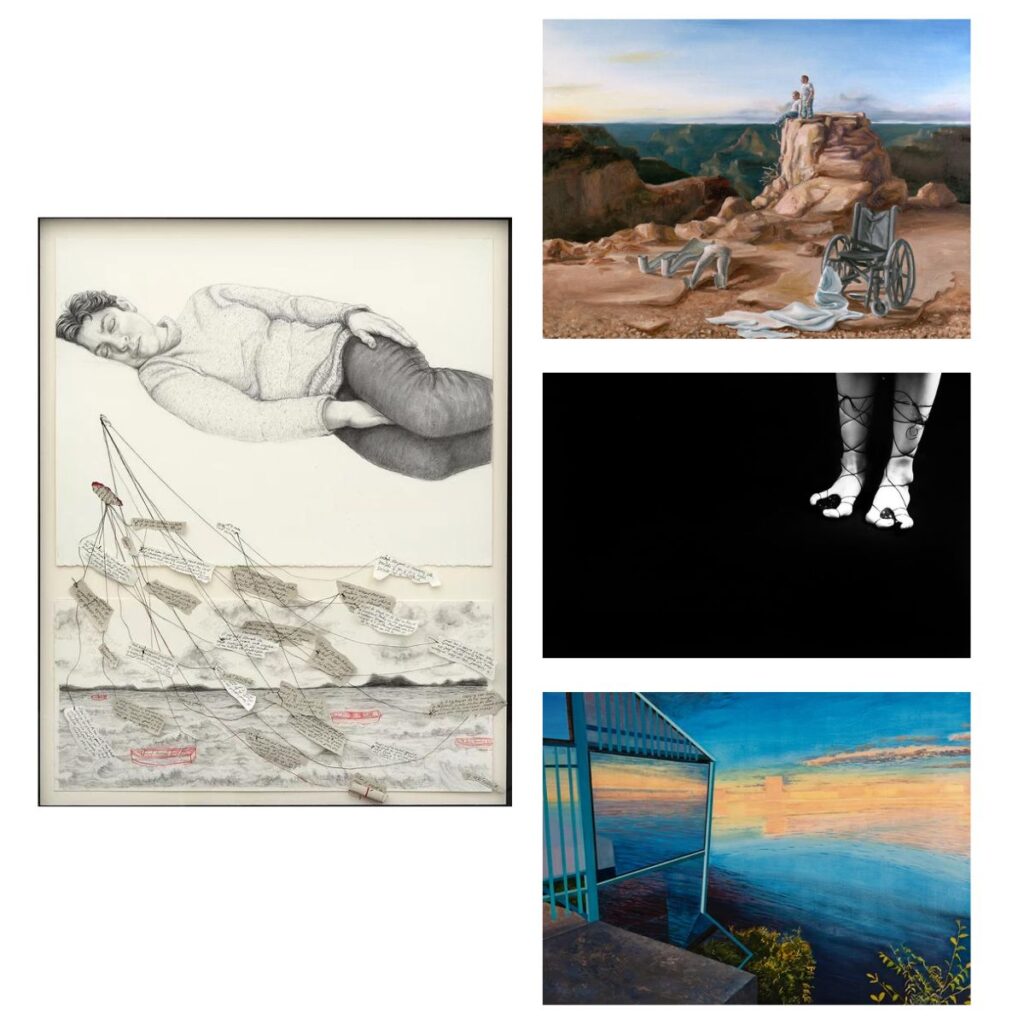9 Tips to Integrate Artists With Disabilities and 7 Artists to Share
Take note: This short article will use Men and women 1st Language considering the fact that we do not know the reader’s desire.
The term “disability” may come to feel not comfortable to use, enable by yourself teach about, in the art space! What if I really do not say the suitable detail? What if I really do not know ample information and facts about it? What if it singles learners out and will make them uneasy? There can be many “what ifs,” and that is all right! It is superior to talk to issues mainly because it signifies curiosity and can discover an spot to grow in. Let us stretch ourselves and our art curriculums and examine what it can appear like to integrate artists with disabilities and why it matters.
What are the added benefits of integrating artists with disabilities into your curriculum?
Ahead of diving into this problem, let’s establish what a disability is and some other baseline conditions. This will enable us to go forward on the identical site.

Knowing the basic principle of windows and mirrors can be practical when considering the advantages of integrating artists with disabilities. Although this refers to tales, the exact same can be used to artwork. Just after all, artworks are visual tales. Persons see the outside earth by a window. If we use art as a window, we can use it to expose college students to background, new views, and activities. Mirrors allow us glance at ourselves. Artwork can replicate our students’ sophisticated identities. When it does, it can empower pupils and “develop connection and a sense of belonging.”
Bringing artists with disabilities into lesson programs can be one more window of human variety to expose our pupils to new views and ordeals. This exposure can make deeper connections in just an artwork or approach. This greater recognition can also acquire empathy and make our learners a lot more curious learners. It can also widen our very own “understandings of human variation and differences.” Artists with disabilities can be a mirror for students who have a disability and remind them they belong in the artwork room.
Below are 9 tips to maintain in mind as you involve artists with disabilities in your artwork home and curriculum.
Get in contact with an admissions counselor to master additional about Art and Assorted Learners, Selection-Based mostly Art Schooling, and Tutorial Approaches for Artwork Teachers. In these graduate classes, you will understand inclusive techniques and how you can boost change in your classroom to aid all students experience seen and succeed.
1. Insert artists organically.
Include things like artists with disabilities if and when it suits in just your existing lesson designs. There is no want to make a big offer out of it or draw exclusive interest to the artist. Introduce them just like you would any one else.
The tendency can be to admire artists with disabilities, framing it with, “Look what they overcame!” Whilst this can be inspirational, it can also be detrimental. When “particular person artists are admired for their potential to create perform comparable to other equipped-bodied artists… [it] affirms the notion of persons with disabilities as confined in their things to do, as perfectly as the idea that artists with disabilities aspire to be like ‘normal’ artists.” Lots of people today with disabilities and artists with disabilities “do not automatically want to ‘emulate the norm…’ somewhat, they have full and gratifying life they could not consider dwelling any other way.”
2. Display screen artwork on your partitions.
Just like with any other artist, if you like an artist’s operate, hold it on your wall! Viewing it on your wall each and every day may perhaps remind you to reference that artist more normally. Making function quickly available will also encourage your learners as they make artistic possibilities everyday. It is also a way to reflect broader strategies of what is “normal” and suitable.

3. Consider the language you use.
Words and phrases have electrical power and can shape how we see the environment. Clear away ableist language to improved body conversations. Ableist language assumes a person with a incapacity is of lesser worth. For precise examples of how to get rid of ableist language, examine this post.
4. Involve a wide variety of artists.
Bear in mind, disabilities arrive in all shapes and measurements. Some may well be cognitive, and some may possibly be physical. Some disabilities might be apparent, and some might be concealed. The most prevalent artists with disabilities art academics share are ones who “… primarily characterize North American and European artists who developed perform in the past one particular hundred and fifty a long time.” Broaden your scope and involve artists from a number of time intervals and nations. Reference a large array of artists and disabilities when feasible to clearly show learners how incredibly assorted artists and folks can be. Pupils will “… understand disability for its commonality… instead than its exceptionality.”
5. Mention the disability.
All artists, incapacity or no disability, use their everyday living and encounters to notify their artwork. Incapacity is a beneficial section of daily life and encounters. Lots of learners do not have the everyday living knowledge or perception to make connections on their individual. As academics facilitating finding out, we need to explicitly mention an artist’s incapacity so learners can make apparent connections.
Lots of teachers say they share an artist’s disability “when applicable.” This observe is problematic because, as mentioned over, “method and content material are inextricably tied to how we inhabit the planet.” It is usually related! When we withhold this data from our pupils, it can restrict their definition of artistic suggestions and objects. It can also limit connections, exposure, and prospects to grow and learn.
6. Use children’s textbooks.
If you are anxious about discussing incapacity in front of your learners, consider a compact step by studying a children’s e book. This is a reduced-pressure way to introduce disabilities and what they can look like with fictional figures. This is also a “scripted way” to deliver a topic you are unfamiliar with into your classroom.
Choose the time to preview guides to assure they symbolize incapacity in a constructive mild and do not reinforce stereotypes. “This features the representation of individuals with disabilities as the item of pity, sinister and/or evil, a burden, incapable of totally participating in existence, a supercrip, nonsexual, an item of violence, and laughable.”

7. Aim on particular disabilities not represented in your classroom.
In buy to cultivate a classroom surroundings where by all of your students sense safe and sound, do not single any person out. Concentration on unique disabilities that are not represented in your classroom. Students with disabilities can nevertheless relate and see by themselves mirrored in the curriculum more anonymously.
8. Make history know-how.
As stated previously, learners often do not have the everyday living knowledge or insight to make connections on their individual. Consider the time to build qualifications awareness, just like you would for any other new topic. Distribute information tales or demonstrate motion picture clips to convey a selection of perspectives about a certain incapacity.
9. Share private tales.
Motivate college students to share and take part in the discussion by forging the way. Go first and design how to share. If you have a own romantic relationship with a buddy or loved ones member who has a unique incapacity from your lesson, speak about it. It can make the disability more “real” for pupils. It can also open up the door to pupil thoughts you could be ready to response.
Now that you have many ideas in your repertoire, you may perhaps be thinking what artists to showcase. There are a lot of artists with disabilities that are very likely presently in your curriculum. In accordance to a study of Illinois lecturers, Chuck Near is one of the most usually referenced artists with a disability thanks to his paralyzation, followed by Frida Kahlo, who experienced polio and lifelong injuries from a bus accident.
Other artists already in your curriculum may well involve:
Get begun with these seven artists with disabilities.
Notice: Peruse the back links down below to ascertain if they are ideal to share with your students.

Down below is a checklist of 7 artists with disabilities, some of whom make Disability Art. This is a excellent checklist to get you started off if you want to include artists who are currently working towards and exhibiting.
- John Behnke
Behnke bases his fluorescent acrylic paintings on serious areas that are altered from his memory or goals. - Laura Ferguson
Ferguson’s subject make any difference is her scoliosis and curving spine. She brings together drawings with x-rays and scans to merge the worlds of medication and visual art. - Brooke Lanier
Lanier has retinal detachment, but it doesn’t quit her from painting beautiful waterscapes. - Riva Lehrer
Lehrer’s work is ideal recognized for her representations of people with bodily disabilities who have been stigmatized. - Sandie Yi
Yi is a sculptor and fiber artist who types and constructs wearable artwork for her unique system morphology. - Stephen Wiltshire
Wiltshire is a British architectural artist with autism and is mute. He draws amazingly in-depth cityscapes from memory. - John Wos
Wos has a congenital issue that weakens his bones. He depicts his heightened sensitivity to the earth about him in his artwork.
Incorporating artists with disabilities is similar to how you would method exposing your students to any other window of human diversity. It is worthy of the further effort and hard work and temporary irritation to check with questions and find out alongside your pupils. The payoff can be worthwhile! Student engagement and curiosity levels can improve, and students will cultivate empathy and construct connections. We hope the guidelines and artists above equip you to grow to be a additional reflective art educator and get began with a extra inclusive artwork curriculum!
If you want to take a look at extra, here are resources to obtain added artists with disabilities:
Who is your preferred artist with a incapacity to share with your students?
What tips do you have for integrating artists with disabilities into the curriculum?
